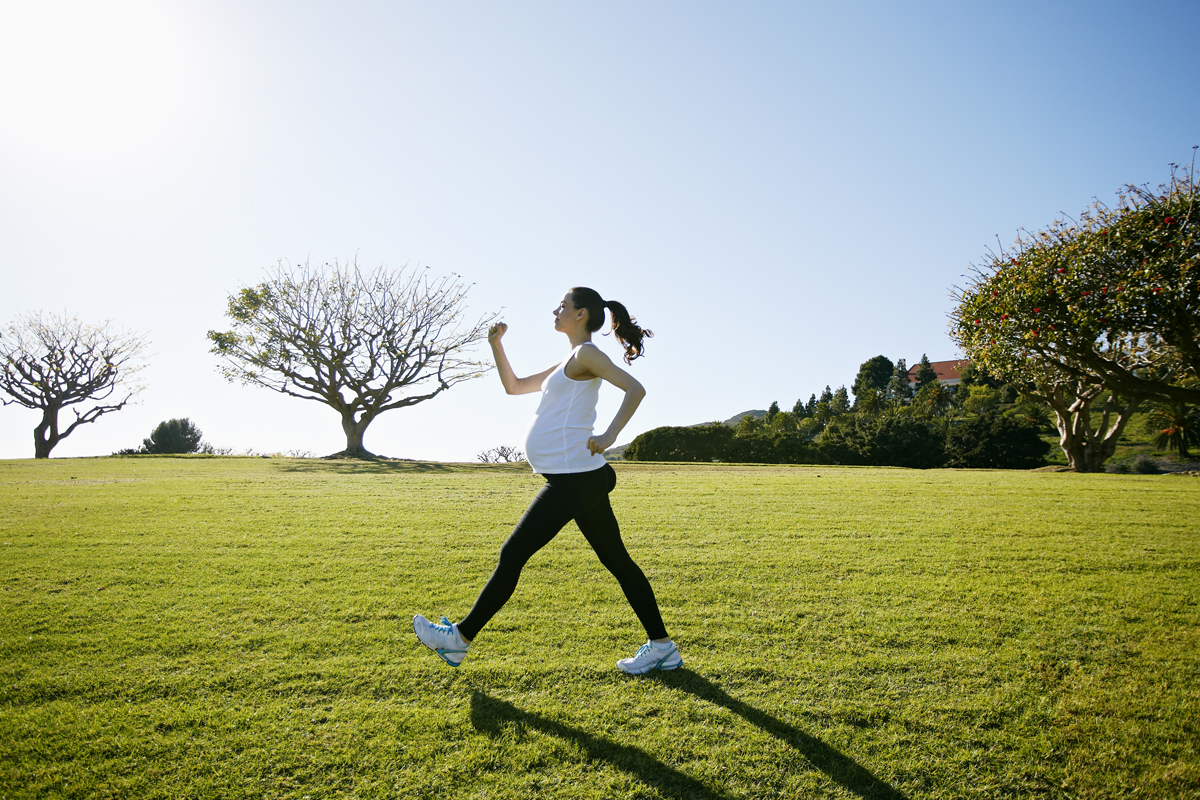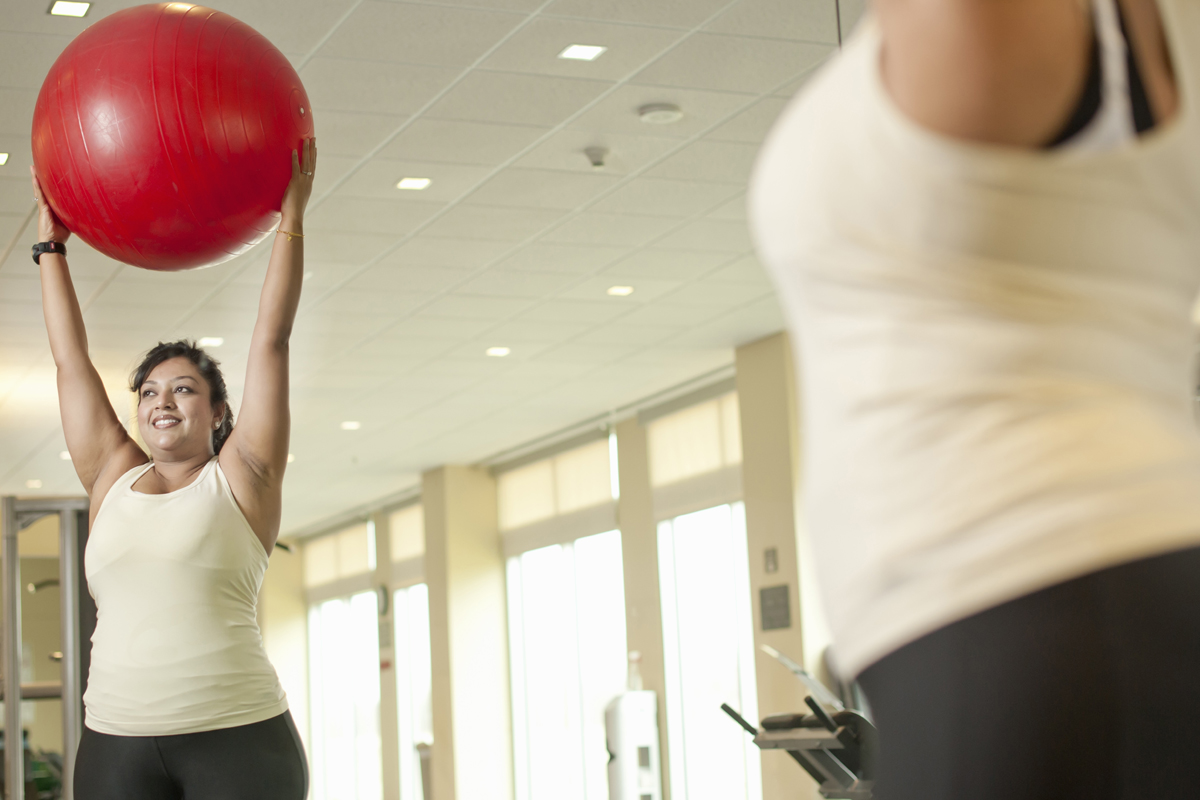Inside the Latest Physical Activity Guidelines
What you should tell your clients about the multifaceted benefits of exercise, based on guidance from the 2018 Physical Activity Guidelines Advisory Committee.
| Earn 1 CEC - Take Quiz

The more we move, the better we live. Even a few minutes of exercise is better than sitting still.
These are just two of the conclusions in the recent report from the 2018 Physical Activity Guidelines Advisory Committee, whose recommendations form a sound foundation for integrating exercise into our daily lives.
The committee’s advice relates to everything we do as fitness professionals. Here’s the background: In November 2018, the U.S. Department of Health and Human Services released the Physical Activity Guidelines Advisory Committee Scientific Report, the first update of the panel’s 2008 physical activity report. The 17-member committee of experts and consultants spent 20 months on an extensive scientific review of research, focusing on articles published in the 10 years since the publication of the 2008 report (PAGAC 2018). Read on for the most important messages, along with why they matter to your clients.
Alas, We Are Still an Inactive Society
To stay healthy, adults need 150-300 minutes of moderate-intensity aerobic activity weekly or 75–150 minutes a week of vigorous-intensity aerobic activity (or an equivalent combination of moderate- and vigorous-intensity aerobic activity), the committee recommends. Additionally, adults are encouraged to do muscle-strengthening exercises that involve all the major muscle groups at a moderate intensity or greater on 2 or more days a week. Youth aged 6–17, by contrast, should have 60 minutes of moderate-to-vigorous exercise daily. Few Americans follow that advice—just 19% of women, 26% of men and 20% of adolescents (HHS 2018).
The 2018 HHS report cites familiar public health statistics: Inactivity contributes to $117 billion in annual healthcare costs and causes about 10% of premature mortality. Studies associate sedentary behavior with type 2 diabetes, all-cause mortality, CVD mortality, and cancers of the lungs, colon and endometrium.
Crucial Insights for Fitness Pros

Several key findings in the new report deserve the attention of fitness pros and their clients:
Exercise Boosts Brain Health
All exercise bouts produce acute improvements in executive function, the brain processes that help us manage our day and plan activities. Executive function also includes starting new tasks, handling behaviors and controlling emotions. Physical activity has been shown to enhance cognition (the process of acquiring knowledge), memory, attention and academic performance.
Exercise Improves Depression Management

Consistent physical activity reduces depressive symptoms (or the severity of symptoms) and has been shown to reduce the risk of clinical depression. In addition, women doing moderate-to-vigorous physical activity become less likely to develop postpartum depression than their less active counterparts. Pregnant women with anxiety or depression can promote a healthy pregnancy with even low doses of physical activity.
Exercise Helps Us Sleep Better
There is impressive evidence that regular moderate-to-vigorous physical activity improves sleep quality. The research finds that exercise helps us get to sleep sooner and reduces time awake during the night. Consistent exercise has been shown to increase deep sleep and lower daytime sleepiness. The research also answers a question that fitness pros hear often: What’s the best timespan between exercise and bedtime? The evidence says it doesn’t matter. Exercise produces the same health benefits for equivalent bouts of physical activity more than 8 hours before bedtime, 3–8 hours before and less than 3 hours before.
Any Amount of Exercise Improves Quality of Life
A most encouraging finding in the new report is that any bout of physical activity—no matter how small—yields immediate health benefits. These can include a reduction in anxiety and improvements in blood pressure, sleep quality and insulin sensitivity. The 2008 Guidelines suggested a minimum of 10 minutes of physical activity to improve markers of health. More recent studies have found that activity of any duration makes people healthier.
Exercise is Vital to Weight Management

If you’re feeling stung by media reports and professional organizations that have minimized the importance of exercise in weight management programs, the 2018 report should provide reassurance. Studies find a strong correlation between more physical activity and less weight gain in adults. The evidence suggests that exercising 150 or more minutes per week at moderate-to-vigorous intensity helps to prevent weight gain.
Counting Steps Makes a Difference
The new report supports the use of pedometers and step trackers, noting that it’s easy for people to understand the devices’ contribution to health and well-being. Whether they walk at a light, moderate or vigorous intensity, people of all ages benefit from counting their steps. But don’t worry about telling clients to walk 10,000 steps daily. Because walking intensities and distances vary widely—with a vast variety of outcomes—the new Guidelines do not recommend a specific daily step count.
Higher-Intensity Exercise is Better for Cardiovascular Health
The new Guidelines clarify that exercising at higher intensity brings greater gains in cardiorespiratory fitness than steady-state exercise. They caution, however, that harder workouts increase the risk of injury, especially for people who aren’t in the habit of hard workouts. The report adds the caveat that the long-term sustainability of HIIT regimens is not fully known. Thus, despite the im┬¡pressive benefits of higher-intensity exercise, the 2018 report recommends achieving guidelines for frequency and duration of aerobic activity before increasing intensity.
It’s Best to Spread Exercise Throughout the Week
People who do all (or most of) their weekly moderate-to-vigorous physical activities in 1–2 days do not see reductions in all-cause and cardiovascular mortality compared with those who get the same volume of exercise 3 or more days per week. Aim for an exercise frequency of 3-plus days of the week.
Children Also Benefit From Regular Exercise

For the first time, the report cites research showing that even 3- to 5-year-olds benefit from consistent physical activity. Importantly, the evidence correlates more physical activity with less risk of excessive increases in body weight and adiposity, improved cardiovascular risk-factor status, fewer symptoms of depression, and favorable signs of bone health in children aged 3–17. Physical activities that boost bone health include hopping, skipping, jumping, tumbling and other forms of dynamic, high-impact, short-duration exercise. Children should get 60 minutes per day of moderate-to-vigorous physical activity.
Exercise is a Must as We Grow Older
Considerable evidence shows the benefits of various modes or combinations of physical activity in the 65-and-older population. Progressive resistance training, multicomponent exercise, dual-task training, tai chi, yoga, dance and other activities can improve strength, balance, gait speed and ability to perform activities of daily living. “Multicomponent” programs combine elements of aerobic, muscle-strengthening and balance training. Dual-task programs combine a cognitive activity (such as counting backward) with physical movements. The report recommends 150–300 minutes of moderate-intensity activities for older adults. Because older adults expend more energy than younger adults for the same task (e.g., walking), exercises should progress at an intensity relative to individual fitness levels.

Please Share These Insights With Clients
The 2018 Physical Activity Guidelines cite studies showing that regular moderate-to-vigorous physical activity—the work fitness professionals specialize in—makes life less risky. You can help clients reduce their risk of type 2 diabetes, gestational diabetes, hypertension, heart disease, stroke, excessive weight gain, dementia, anxiety, depression, postpartum depression and harmful falls. They’ll also be less likely to develop cancers of the breast, colon, endometrium, esophagus, kidneys, stomach and lungs.
For those who want a higher quality of life and better physical function, regular exercise is the only way to go. Help your clients keep moving . . . briskly!
References
PAGAC (Physical Activity Guidelines Advisory Committee). 2018. 2018 Physical Activity Guidelines Advisory Committee Scientific Report. Washington, D.C.: U.S. Department of Health and Human Services.
HHS (U.S. Department of Health and Human Services). 2018. HHS releases Physical Activity Guidelines for Americans, 2nd ed. Accessed Feb. 7, 2019: hhs.gov/about/news/2018/11/12/hhs-releases-physical-activity-guidelines-americans-2nd-edition.html.
Len Kravitz, PhD
Len Kravitz, PhD is a professor and program coordinator of exercise science at the University of New Mexico where he recently received the Presidential Award of Distinction and the Outstanding Teacher of the Year award. In addition to being a 2016 inductee into the National Fitness Hall of Fame, Dr. Kravitz was awarded the Fitness Educator of the Year by the American Council on Exercise. Just recently, ACSM honored him with writing the 'Paper of the Year' for the ACSM Health and Fitness Journal.






